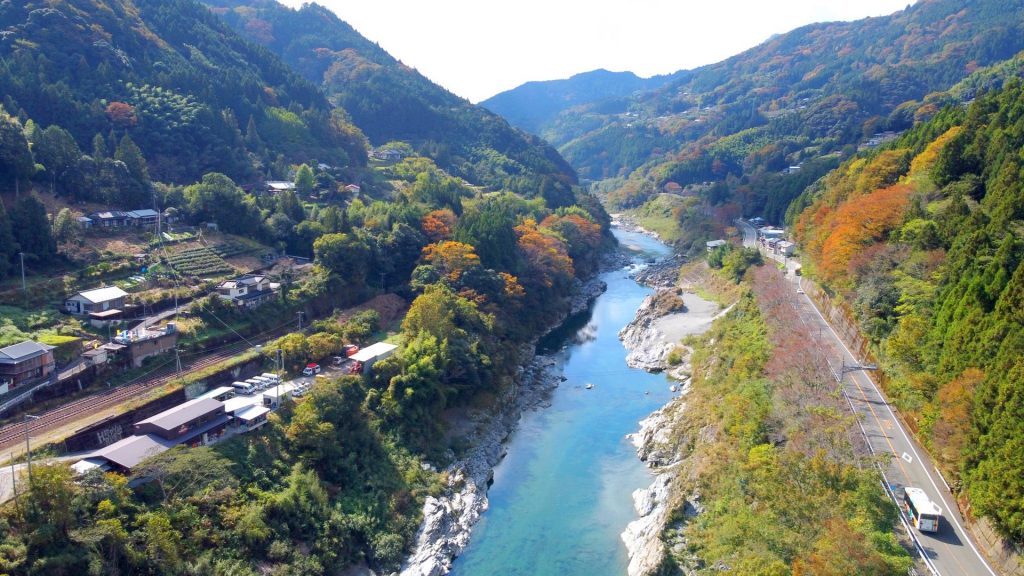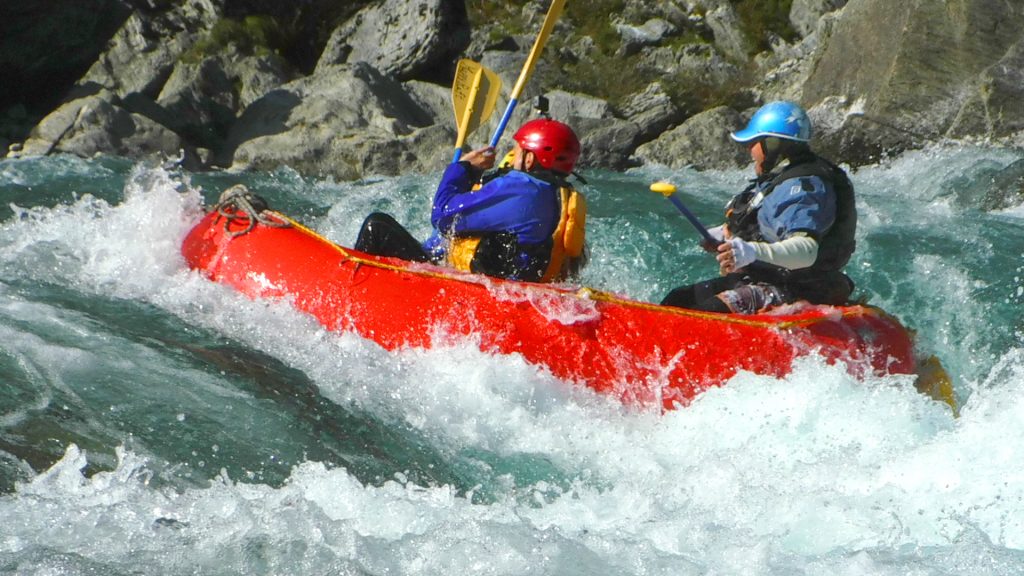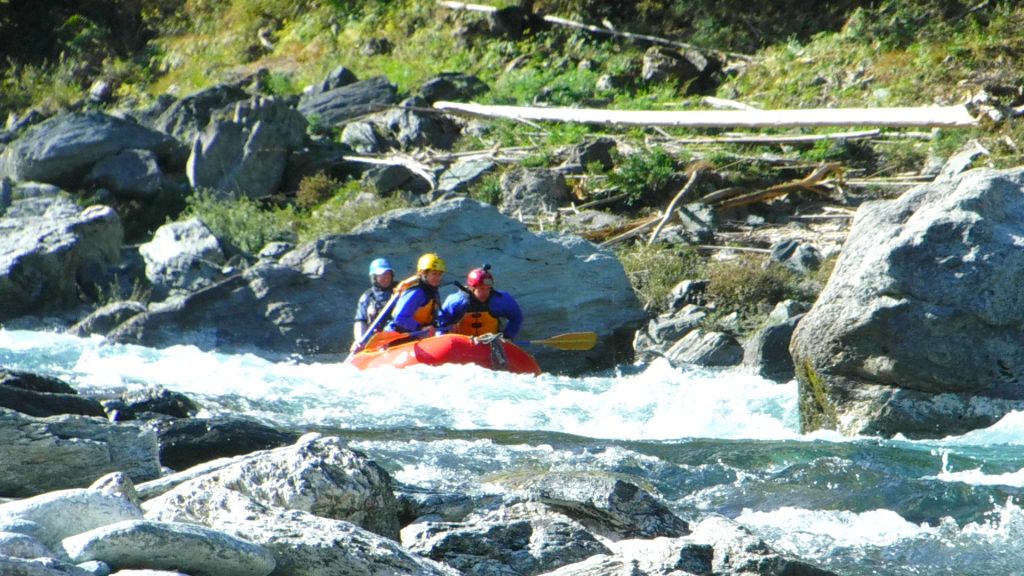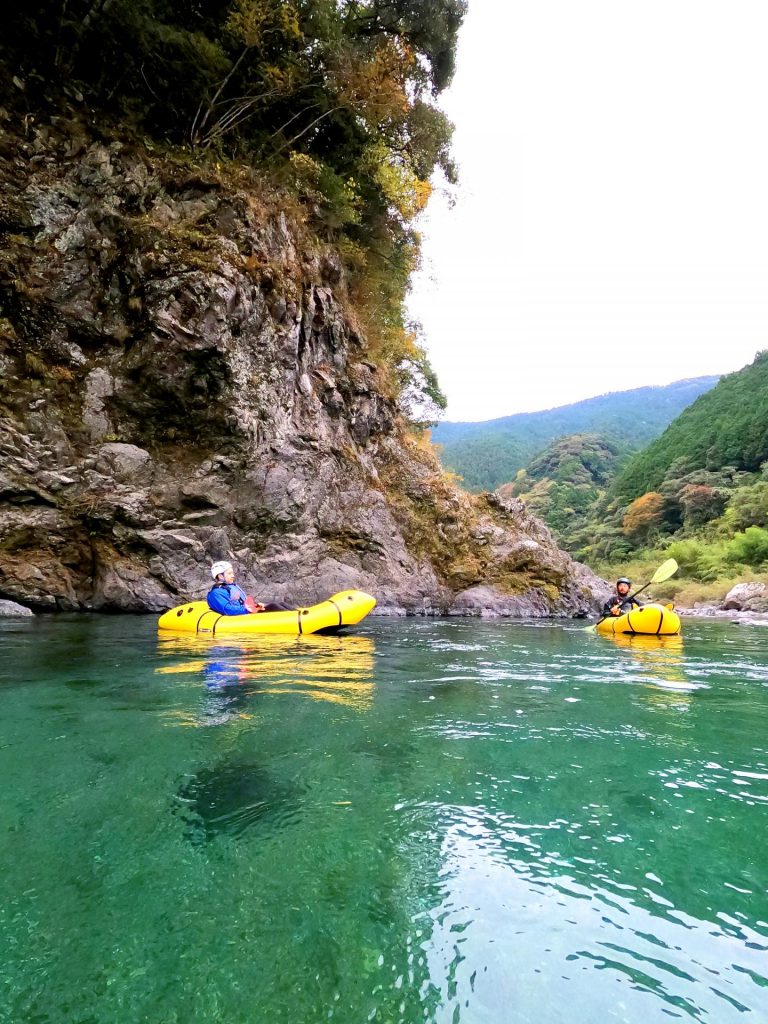Kochi Shikoku Rafting Kayaking Outdoor Japan
Shikoku’s many mountains, valleys and proximity to the ocean has made it a hidden gem for rafting, kayaking and canyoning enthusiasts willing to take a step or two further from the Golden Route of Tokyo, Kyoto and Osaka. Shikoku—especially along the coast—doesn’t get as cold as mainland Japan, even in peak winter, and river fun turns from early spring to late autumn.
Kochi Prefecture’s numerous waterways are actually closer to Kansai than people think. From Okayama Station on the Sanyo bullet train line, rent a car and drive down to Kochi. This scenic drive takes you on the Great Seto Bridge which connects the main island of Honshu to Shikoku. It’s about two hours to the top of Kochi and three to central Kochi.
World-Class Rafting on the Yoshino River

Our first stop is the famous Koboke section of the Yoshino River, Japan’s prime whitewater run, not just for the size and scale of the river, but also the clear emerald warm water and stunning canyons. This Yoshino River is fed by rain and dam controlled, so rafting tours can start as early as March go as late as November. During typhoon season (late August to early September) the river has arguably the most thrilling rapids in Japan.
Happy Raft has been guiding on the Yoshino River since 2004 and runs half-day, full-day and family rafting trips and canyoning tours (July to September). Their English-guided trips are small and personalized, and their three-person “Mini Me” raft is popular with pairs as it is thrilling being so close to the water.

“I grew up in North Queensland, Australia, and worked as a rafting guide on Tully River,” says founder Mark Treston. “At that time we had loads of Japanese tourists. They were so much fun and really enjoyed their holidays, and I got the impression that Japanese people really liked to enjoy life. When I got the opportunity to come and guide rafting in Japan I jumped at the chance.”
In 2001, Treston visited Shikoku and camped around the island enjoying the beaches and surfing. The following year, he moved his family down from Gunma and started Happy Raft. All guides are RAJ (Rafting Association Japan) qualified and some hold the New Zealand Rafting Association grade 4/5 or senior grade 4/5 qualification.

Tours start at ¥6,000 for half-day trips and ¥11,000 for full-day trips (prices may vary depending on the season). Aside from the tours, Happy Raft also has guesthouses and a bagel cafe at their base. There are uncrowded hiking trails nearby as well. Although Happy Raft is technically based in Kochi Prefecture, it sits on the border with Tokushima Prefecture near the famous Iya Bridge, a traditional suspension bridge, over the mystical Iya Valley.
If you’re coming by train, Happy Raft is a three-minute walk from Tosa Iwahara Station on the JR Dosan line. They also offer pick ups from Oboke Station.
New Water Adventures on the Niyodo River

After exploring the Yoshino River, drive down to central Kochi for the night then make your way to the Niyodo River. It is about an hour and thirty minutes from Kochi City. The iridescent river runs through Nakatsu Gorge, a popular hiking and camping spot most popular for its “Niyodo Blue” waters and the 20-meter Uryu Falls at the end of the trail.
The best way to immerse yourself in this river (literally) is signing up for a pack rafting and canyoning tour with Niyodo Adventure, the region’s first canyoning company, which opened in early 2020 by husband-and-wife team, Hiro and Zoe Kanzawa.
Tours are led in English and Japanese and can be catered to beginners. The canyoning tour takes three hours in the Nakatsu Gorge, with plenty of opportunities to jump into pools, slide down natural water chutes and abseil down cliffs. There are no other canyoning companies here, so you’ll most likely have the gorge all to yourself. There’s also a family canyoning option for children six and up. Canyoning tours run from April to October (note tours may be cancelled during the rainy season in June and July).
Further downstream, pack rafting tours are held April to November. Pack rafts are light, inflatable boats that are very stable, but extremely directional. They’re small and close to the surface, so you can navigate through areas even at low water. The four-kilometer course is gentle enough that inexperienced paddlers can safely learn in grade two rapids, with a few thrilling spots.
“We like to take people on these small rapids. You might flip, you might not…who knows?” laughs Zoe. “Our main purpose is to provide experiences people can’t get in the city, and to get them out of their head and into their body—to be more present.”
Both pack rafting tours and canyoning are ¥8,500 per person for three hours.
The couple recently built a sauna so customers can warm up after a day in the water and enjoy a cup of freshly brewed Niyodo Coffee. This area is starting to pick up traction as there are several new cafes and even the Mukai Craft Brewing, which uses the river’s fresh spring water for their beer. Their Blue Brew taproom overlooks the Niyodo River.
Leisurely Kayaking on the Shimanto River
It’s almost impossible to visit Kochi without making a stop at the Shimanto River, Shikoku’s longest and “last pure river,” named for the clear, clean water and the fact that there are no dams. It runs through Tsuno, Yusuhara, Nakatosa and Shimanto towns and Shimanto City, and eventually empties into the Pacific Ocean. This area is popular for cycling, camping and kayaking.
Kawarakko Shimanto Canoe and Campsite operates on the banks of the river and offers a leisurely beginner course down a three-kilometer stretch of the river. The tour starts after a short instructional lesson and practice session. Most sections are placid although there are two small rapids. Kayakers need to steer clear of the houseboat cruise that passes once every hour.
“We have customers who want to kayak in winter too,” says guide Kazunori Okumura, who was born and raised in Shimanto. “It doesn’t snow that often down here, but when it does, the views of the river and snow are stunning,” he notes.
This tour passes by two chinkabashi, bridges designed without side rails so they are submersible and reduce the risk of the bridge being washed away in a flood. There are 22 chinkabashi crossing the main river and, while many are modern, there remain a few built in the old style. Tours start at ¥6,000 per person.
The family-friendly company also offers snorkel rentals in the summer, canoeing, stand-up paddling and slow rafting.
To learn more about Kochi Prefecture, check out Visit Kochi Japan’s official website here.
Discover more about Kochi Prefecture
- Shikoku Road Trip
- Snorkeling, Surfing and Sustainability in Kochi
- Following the Paper Trail in Kochi
- Unchanged Uguru: Snorkeling and Diving in Kochi
Kochi Shikoku Rafting Kayaking Outdoor Japan
